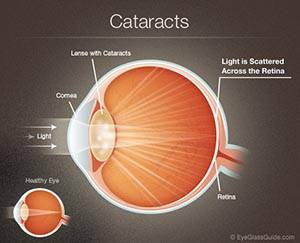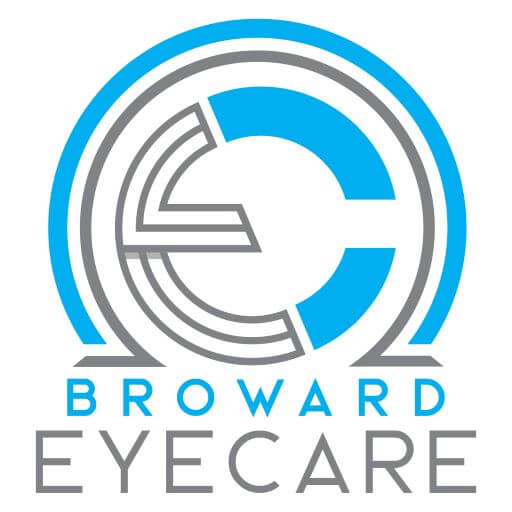Cataracts are part of the normal aging process. A cataract forms when the natural lens of the eye becomes clouded. The cause is usually unknown but can result from exposure to ultraviolet light, injury, heredity, disease and advancing age.
Cataract Diagnosis
Utilizing advanced diagnostic technologies and our ability to maximize visual function prior to surgery; we have enabled patients to function wonderfully with early stage cataracts for years before they need surgery. Initial diagnosis of cataracts can be made with the slitlamp biomicroscope.
Get Treatment From Our Cataract Surgery Specialist In Fort Lauderdale, FL
Eventually, changing the eyeglass prescription is no longer sufficient to maintain good vision. Surgical removal of the cataract may be indicated if blurring of the vision interferes with normal daily activities (reading, driving, etc.).

A cataract is removed using microsurgical techniques. This incision is so small that, in almost all cases, it is self-sealing and sutures are not required. Once the cataract (clouded lens) has been removed it is replaced with a new, clear lens.
Modern advances in intraocular lens technology has enabled us to treat vision conditions such as astigmatism with new “toric” intraocular lenses, and near vision correction with “multifocal” and “accommodating” intraocular lenses. Your doctor will discuss these options with you in advance of surgery.
The cataract procedure is most frequently performed under local anesthesia in an outpatient surgery facility. It does not require a stay in the hospital. Sedation is given to most patients to help them relax. The procedure is performed in about 30 to 45 minutes. Thanks to the anesthetic, patients do not feel or see the surgery.
After the procedure patients are instructed to spend a day relaxing at home. Most patients return to normal activities the day following the surgery.
Cataract FAQ
Can a cataract be removed with a laser?
This is a very common misconception. The most advance technique for removing a cataract (phakoemulsification) uses ultrasound, not laser. Currently, there are clinical trials being done to determine whether the laser can be used to remove a cataract. As of this writing, it appears that the laser technique has no advantages over the ultrasound technique. In fact, laser may not work as well as ultrasound at removing more advanced cataracts.l>
Will a cataract recur after surgery?
A cataract does not recur. However, behind the pupil there is a thin, clear membrane called the lens capsule. In approximately 30% of patients this membrane can become clouded. This may occur anytime from several weeks to many years following the cataract procedure. If the membrane becomes clouded, we often call it a secondary cataract, although that is not entirely accurate. The clouded membrane can be opened using a Yag laser. This painless, outpatient procedure is usually performed in the office.
When is a cataract “ripe”?
The term “ripe” is obsolete. The last couple of decades have seen a tremendous improvement in the results of cataract surgery. Before these advances were made, patients had to be hospitalized for a week to ten days for a cataract procedure. The complication rate was higher and there were no intraocular lens implants. After the surgery patients had to wear thick “Coke bottle” type spectacles. In the past, “ripe” was a term used to describe a cataract that had become so advanced that the patient was nearly blind. In those cases the risks and inconveniences of cataract surgery were justified. With the modern techniques that we now use to remove a cataract the term “ripe” has become outdated. Patients are no longer hospitalized and the complication rate is one of the lowest in all of medicine. With the advent of intraocular lens implants, patients are no longer required to wear thick, heavy eyeglasses. Today, after cataract surgery many patients are now able to see well (for most activities) without wearing any glasses.
How do I know when my cataract is ready to be removed?
A. Thanks to recent advances in cataract surgery, we no longer have to wait until a patient is nearly blind before removing a cataract. We now let the patient decide when they would like to have their cataract removed. In most cases we recommend waiting until your vision has become blurred to the point where it is interfering with work, reading, driving or other daily activities. This will be different for each patient. For instance, an airline pilot may want to undergo the procedure at a much earlier stage than someone whose daily activities are less visually demanding. After a thorough examination, your eye doctor will let you know if your vision can be improved with new spectacles or by other means. If that is not possible then it may be time to consider removing the cataract.
